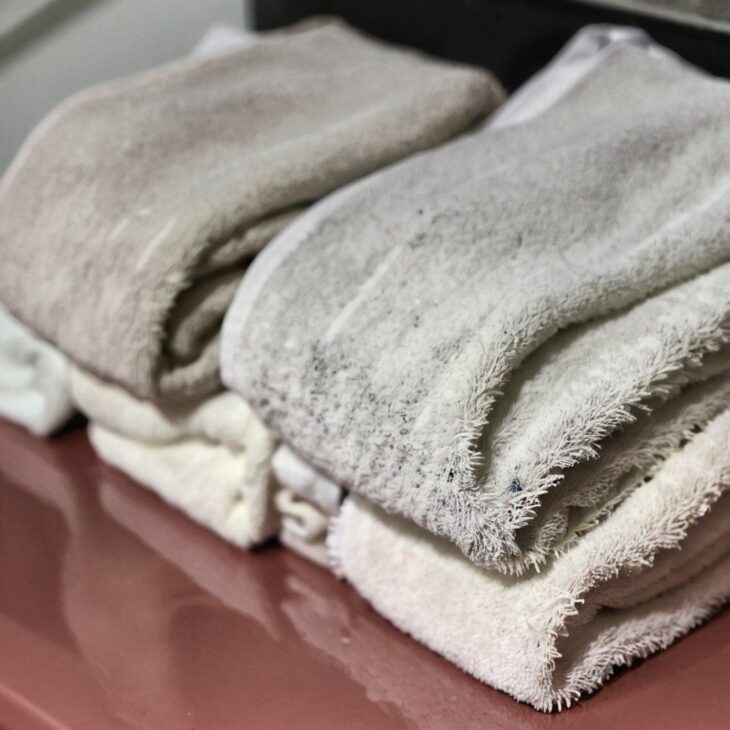Can Dirty Towels Cause Yeast Infection? Unveiling the Hidden Threat
Introduction
Yeast infections are a widespread medical issue that millions of people experience all over the world. These infections, which are brought on by an overabundance of the Candida fungus, can appear in the mouth, genitalia, and skin folds, among other areas of the body. Yeast infections are common, yet they can still cause discomfort and interfere with day-to-day activities. For the purposes of prevention and therapy, it is crucial to comprehend the variables that lead to yeast infections, such as inadequate hygiene habits and external circumstances. The use of soiled towels is one potential element that has drawn interest. It is concerning that towels, which are used for drying and personal hygiene, may store bacteria and fungi if they are not properly maintained. This could lead to an increase in yeast infections.
Towels and Hygiene
Daily Use of Towels
For many people, using towels on a daily basis is an essential component of their personal hygiene regimens. Towels have a variety of uses in keeping things clean, from drying off after a shower to wiping hands and faces all day. But continuous use also causes dead skin cells, dampness, and other organic stuff to accumulate on towels. These circumstances provide the perfect environment for the growth of bacteria and fungi, including the Candida fungus that causes yeast infections. Towels have a vital purpose, but if they aren’t routinely laundered, they can get soiled easily. Towels should be properly cared for and cleaned in order to avoid microbial growth that could endanger users’ health.
Bacterial Growth on Towels
It’s normal for towels to grow bacteria if they’re not cleaned and maintained correctly. Towels come into contact with moisture when they are used to wipe hands or dry the body, creating the perfect habitat for the growth of bacteria. Furthermore, organic debris from the skin, including dead skin cells, can spread to towels and nourish the growth of bacteria. If towels are not properly cleaned and dried over time, these bacteria have the ability to grow quickly and pose a health danger. If given the chance, some bacteria, such those that are frequently discovered on skin and in the environment, like Escherichia coli and Staphylococcus aureus, can flourish on towels.
Link between Dirty Towels and Infections
Concerning research has shown that there is a connection between diseases and unclean towels, which emphasizes the significance of good hygiene habits. A variety of diseases, including bacteria, viruses, and fungus, can thrive on dirty towels because they are full of moisture, dead skin cells, and bacteria. People run the danger of exposing these bacteria to their skin when they use dirty towels to dry off or clean oneself, which raises the possibility of illness transmission. Studies have indicated that towels that are used for various tasks, such wiping surfaces and drying the body, are more likely to contain hazardous fungus and bacteria. Extended contact with these microorganisms can weaken the skin’s natural protective layer, increasing the risk of infection.
Understanding Yeast Infections
Recognizing and treating yeast infections is a common health concern that requires understanding of the condition. Candida albicans, in particular, overgrows in the body and causes yeast infections, sometimes referred to as candidiasis. Though small levels of Candida are naturally present on the skin and mucous membranes, hormonal fluctuations, compromised immune systems, and some drugs can upset the delicate balance, causing an overgrowth and eventual infection. Yeast infections can cause symptoms including itching, redness, and discomfort in a variety of bodily areas, such as the mouth, throat, and skin folds.
Towels as Potential Culprits
Sometimes, when thinking about towels’ potential role in the spread of illness, one overlooks the possibility that they harbor harmful bacteria and fungants. Infections can grow and spread easily on towels because, despite being used for personal hygiene, they can also retain moisture, dead skin cells, and other organic material. The likelihood that users may become ill increases when these germs multiply and thrive on towels that are not frequently cleaned or adequately dried. Studies show that the likelihood of potentially harmful germs being present in towels used for a variety of purposes, such as drying bodies and wiping surfaces, is higher.
Maintaining Clean Towels
Keeping towels clean is crucial to encouraging proper hygiene and stopping the spread of disease. Towels should be washed often in hot water with detergent to help remove any dirt, bacteria, or other impurities that may accumulate over time. To keep towels clean and fresh, we advise washing them after a few uses—ideally, every three to four days. To further eradicate any remaining germs or fungi, sanitize towels with a solution of vinegar or mild bleach. Allowing the towels to air dry completely after washing is especially crucial since damp towels retain moisture and encourage the growth of bacteria.
Personal Hygiene Practices
Maintaining proper personal hygiene practices is necessary to stay healthy and happy. By removing dirt, sweat, and bacteria from the skin, regular washings with soap and water reduce the risk of illnesses and foul body odor. Maintaining proper hand hygiene, which involves washing hands with soap and water for at least 20 seconds, can stop the spread of bacteria and diseases. Regular dental hygiene practices, such as brushing and flossing, can reduce dental health risks such as cavities and gum disease by eliminating food residue and plaque from teeth. Odors, germs, and sweat buildup can be avoided by regular laundry and change of garments. Using clean towels and washcloths after a shower or when cleaning oneself inhibits the formation of bacteria and fungus.
Signs of a Yeast Infection
For quick relief and treatment, it’s essential to recognize the symptoms of a yeast infection. Itching and irritation in the afflicted location, such as the genitalia or skin folds, are typical symptoms. Having trouble urinating or having sex can also cause discomfort. Women frequently experience a thick, white vaginal discharge that tastes like cottage cheese. These symptoms may be accompanied by vulva or vaginal tissue edema and redness. Yeast infections in males can result in redness, inflammation, and itching on the foreskin and penis. Sometimes there could be a rash or pain. If you have these symptoms, it’s imperative to see a medical professional for a precise diagnosis as they may potentially point to other underlying issues. Prompt action can help reduce pain and stop the infection from getting worse.


[…] a regular washing routine is fundamental in preventing the spread of diseases through towels. This section offers practical tips on maintaining cleanliness and minimizing […]
[…] towels might seem harmless, but it significantly increases the risk of transferring bacteria and infections. Personal towels should be strictly individual, promoting a healthier and more hygienic […]
This article is good and I like the article
Osm
Wonder ful
I ike the article
Thank you for another informative web site. Where else could I get that kind of info written in such a perfect way? I have a project that I’m just now working on, and I have been on the look out for such information.
Someone essentially help to make seriously posts I would state. This is the first time I frequented your website page and thus far? I amazed with the research you made to create this particular publish amazing. Magnificent job!